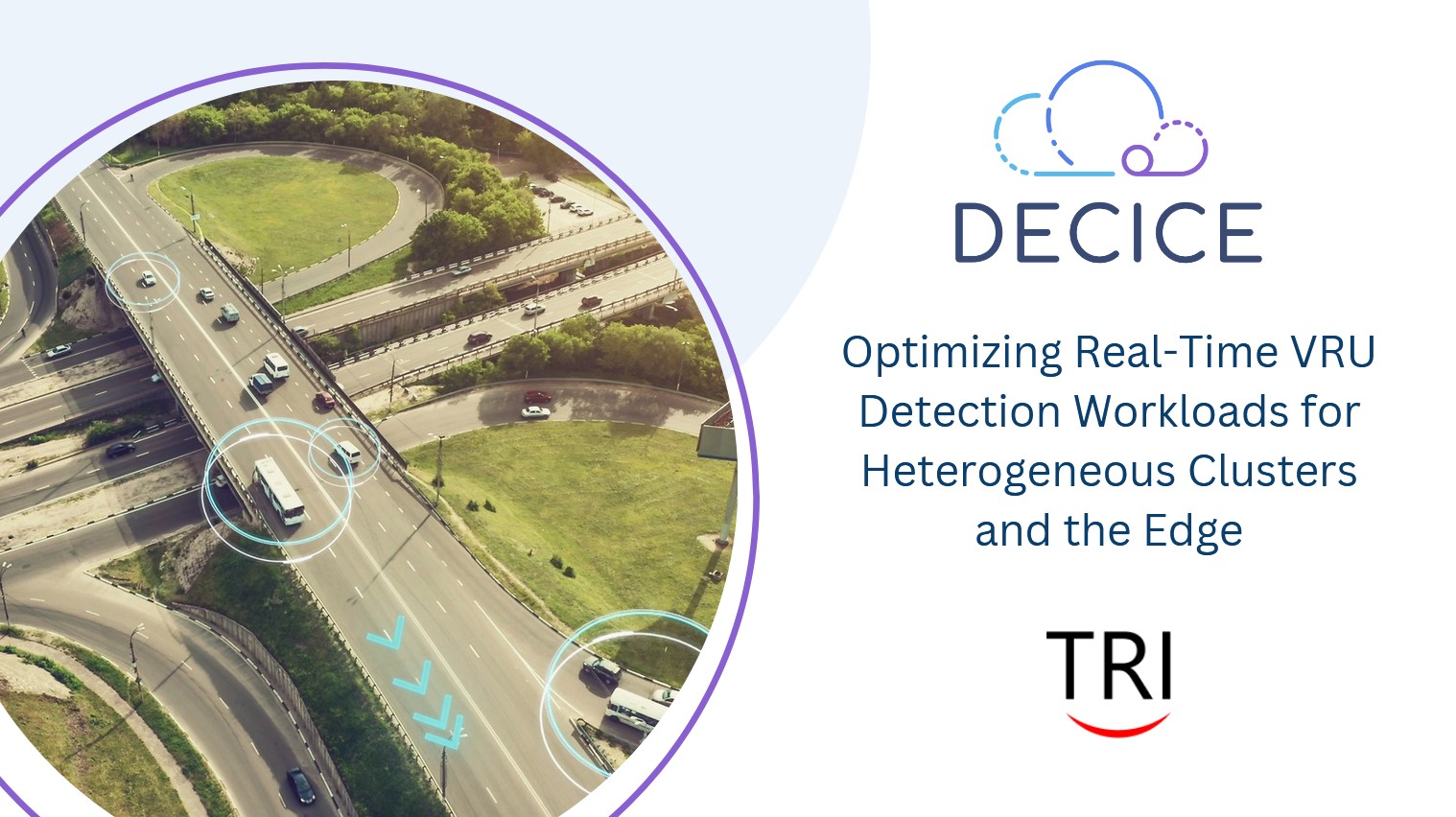Optimizing Real-Time VRU Detection Workloads for Heterogeneous Clusters and the Edge
Jul 03, 2025

The use case "Vulnerable Road User (VRU) Safety in Intelligent Intersections" (Use Case 1), led by VeNIT Lab (Marmara University) and BigTRI, is one of the use cases in the DECICE project, which demonstrates the framework’s ability to work in C-ITS (Cooperative Intelligent Transportation Systems) environments. Designed based on the Car2Car Communication Consortium’s (C2C-CC) definition of Vulnerable Road User Protection (VRUP) application [1], the developed system improves VRU safety in intersections using real-time image processing and Infrastructure-to-Vehicle (I2V) communications, as detailed in a previous news article [2].
The DECICE Framework introduces a transformative capability that transcends the specific use case of VRU safety, offering system-wide benefits across the broader landscape of Cooperative Intelligent Transportation Systems (C-ITS). By integrating advanced features such as AI-based scheduling with both network-awareness and constraint-awareness, real-time digital twin-based system monitoring, and automated management of cluster resources, DECICE addresses the complex demands of modern C-ITS infrastructures. Its intelligent scheduler leverages real-time insights into network conditions and device-level resource availability—continuously provided by digital twin models—to strategically allocate workloads across a heterogeneous cloud-edge continuum. This architecture, essential for large-scale, multi-service C-ITS environments, ensures high-performance operation through optimal task placement and efficient resource orchestration.
Deploying time-critical C-ITS workloads on resource-constrained edge devices presents several challenges. These include the need for trained models to function efficiently across varied hardware and operating system variations while maintaining low latency, high accuracy, and energy efficiency.